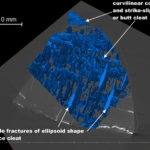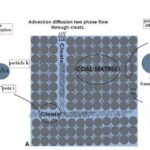Resumption of gas measurements and installation of electricity in the research site
The underground installation of electricity is being made.Measurement of CO2 and CH4 at - 1 meter deep.The digging for the installation of electricity is ongoing, as well as the levelling for the container of the completion Previous Next Gas measurements start again Following the arrival of Nicolas Lecocq at the beginning of May, the experimental measurement of surface gases on the extended perimeter of the pilot site will resume this month. Nicolas' first weeks were devoted to his training on the OPUS acquisition software. These instrumental data (spectrum) will be processed to calculate gas concentrations, a process that Nicolas is currently training for. Installation of electricity in the pilot site In order to supply the instrumental devices, the installation of electricity was planned for the first quarter of 2021. This was without counting on the contingency for the delivery of the Enedis transformer, which was three months late. The connection is therefore scheduled for June 18th, coinciding with the arrival of the instrumental container for the deep well.


